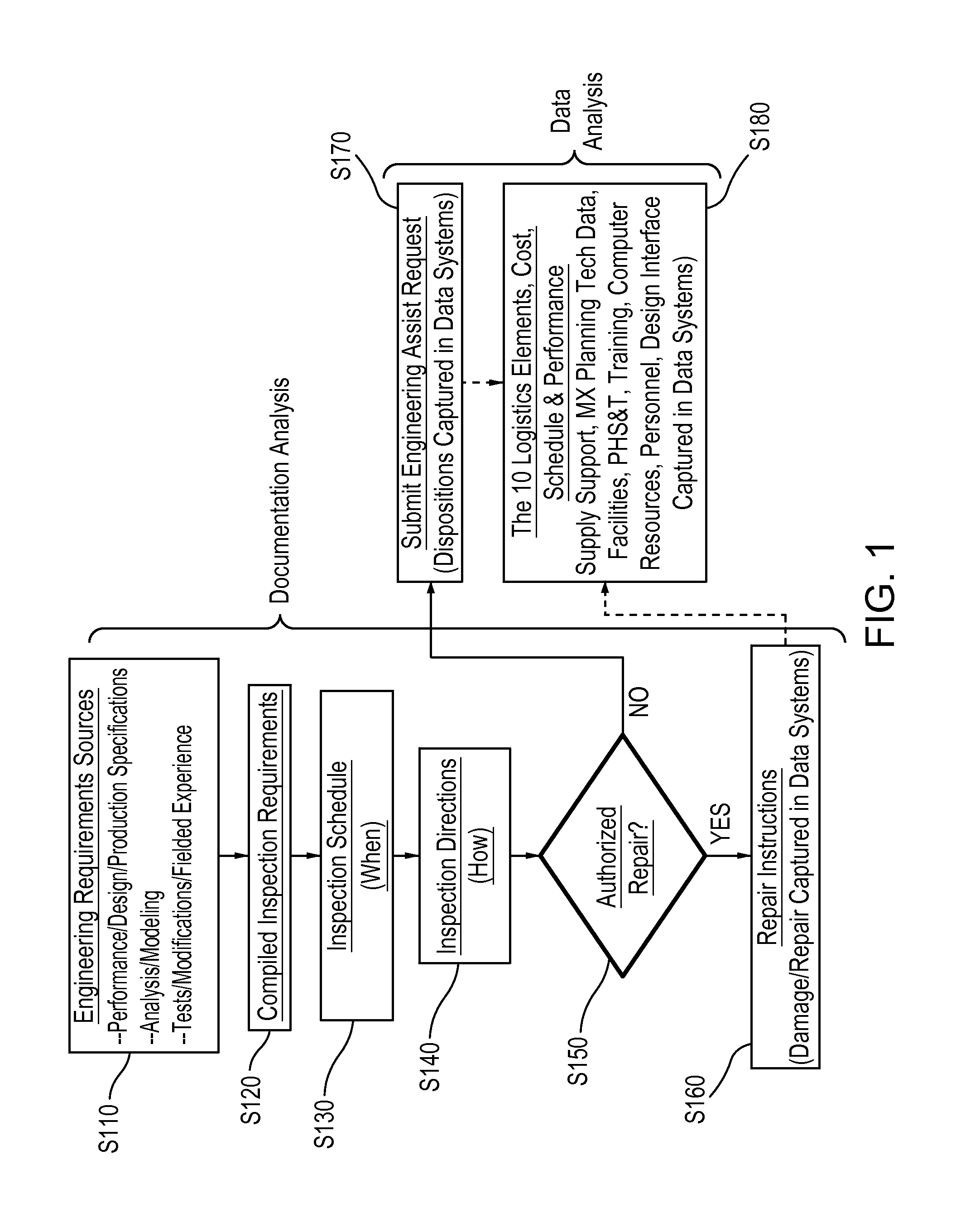Predictive analysis method for improving and expediting realization of system safety, availability and cost performance increases
a technology of applied in the field of optimizing can solve the problems of not being able to accurately predict future failure trends of items with limited or non-existing failure history through analysis of historical maintenance data, and not being able to achieve the expected improvement of expected improvement using traditional reliability analysis methods, etc., to achieve the effect of optimizing cost performance, minimizing system downtime, and improving system safety, availability and cost performan
- Summary
- Abstract
- Description
- Claims
- Application Information
AI Technical Summary
Benefits of technology
Problems solved by technology
Method used
Image
Examples
Embodiment Construction
[0026]FIG. 1 is a flow chart illustrating a method of tracing and deploying of engineering requirements for maintenance, logistical and other functional support documentation and data analysis for a system, according to various aspects of the current invention. According to the flow chart illustrated in FIG. 1, current failure trends are evaluated for one or several components of a given system. The current failure trends may be the frequency of incidence of failure of one or more components of the system. Engineering instructions for repair may also be evaluated when a failure of one or more components of the system has taken place. FIG. 1 provides an exemplary overview of the predictive analysis method for various technology areas, such as the transportation industry, the manufacturing industry, or any other applicable industry that experiences equipment failure. According to various aspects of the current invention, the process starts in S110, where engineering requirement source...
PUM
 Login to View More
Login to View More Abstract
Description
Claims
Application Information
 Login to View More
Login to View More - R&D
- Intellectual Property
- Life Sciences
- Materials
- Tech Scout
- Unparalleled Data Quality
- Higher Quality Content
- 60% Fewer Hallucinations
Browse by: Latest US Patents, China's latest patents, Technical Efficacy Thesaurus, Application Domain, Technology Topic, Popular Technical Reports.
© 2025 PatSnap. All rights reserved.Legal|Privacy policy|Modern Slavery Act Transparency Statement|Sitemap|About US| Contact US: help@patsnap.com



